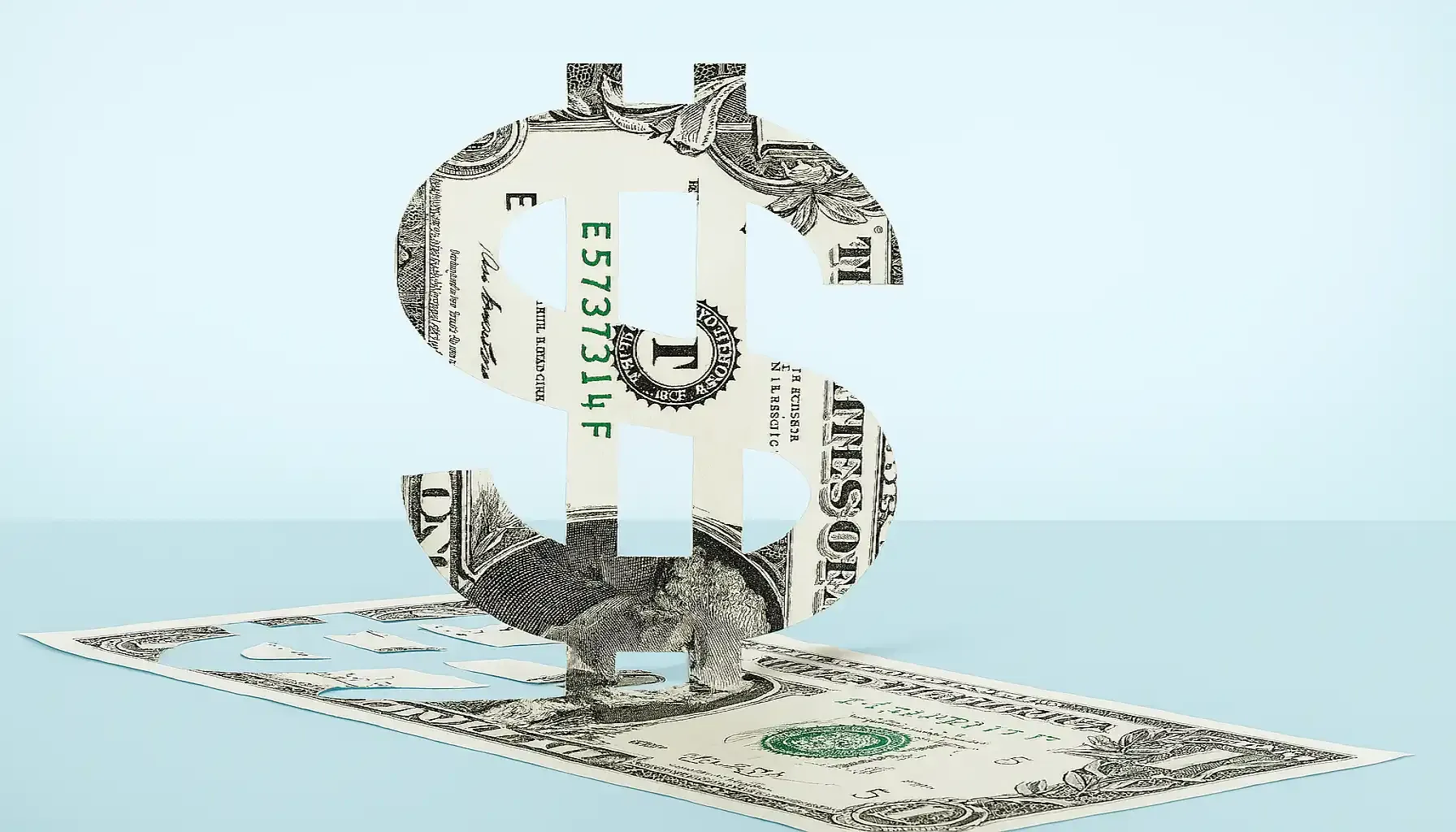Contents:
Nowadays, one of the most widely recognized and appreciated coins in the United States refers to the Abraham Lincoln penny, i.e., a one-cent coin that has been struck by the US Mint for more than one hundred years. In terms of the collecting potential, its history knows ubiquitous appreciation, as well as neglect. So, what do we know about Lincoln pennies worth money so far?
In this material, we are to introduce the rich and complex backgrounds of these numismatic creations, analyze their iterations and market trends, and, finally, explore how to identify coins of this origin and their prices with the help of resources available for enthusiasts of all sorts.
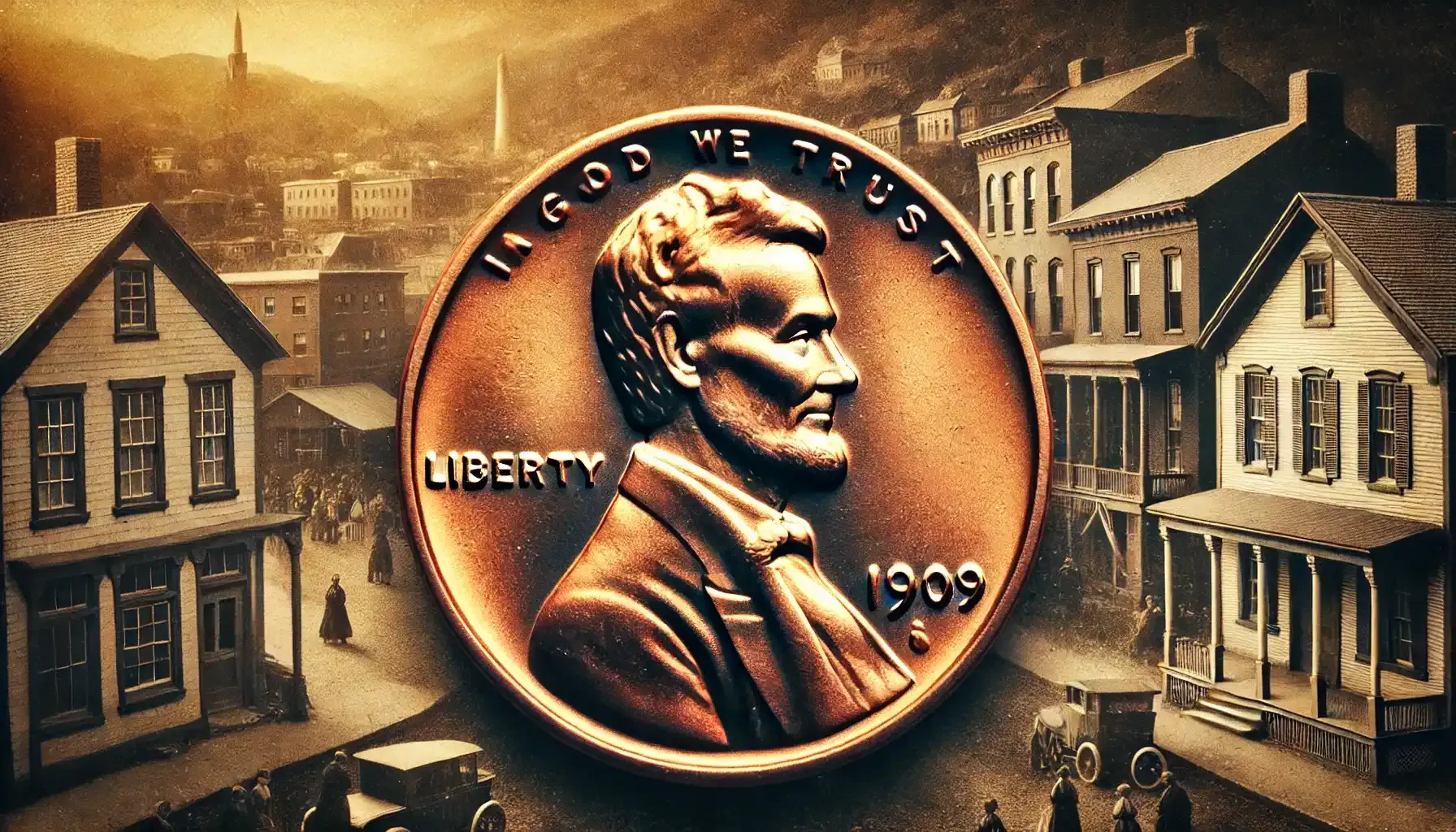
What is The Origin of Pennies?
Although the hero of this article is an American representative of the world’s numismatics, it is important to introduce the universal concept of pennies. The term “penny” is derived from the Old English word “peni” or “penning”, which was used to refer to a silver coin with a small denomination on its face. What is obvious is that the prototypes of pennies came out in the Ancient Civilizations and usually included the Roman denarius and the Greek drachma.
The kingdoms of the British Isles managed to create similar numismatic systems as they followed the example of those whose influence had been imminent, i.e., the Romans. Nevertheless, there appeared a fundamental unit of currency that could have been a reliable and convenient means of trading at that time. As time passed, the penny tradition crossed the Atlantic with the European settlers and became part of the modern numismatic system in the US.
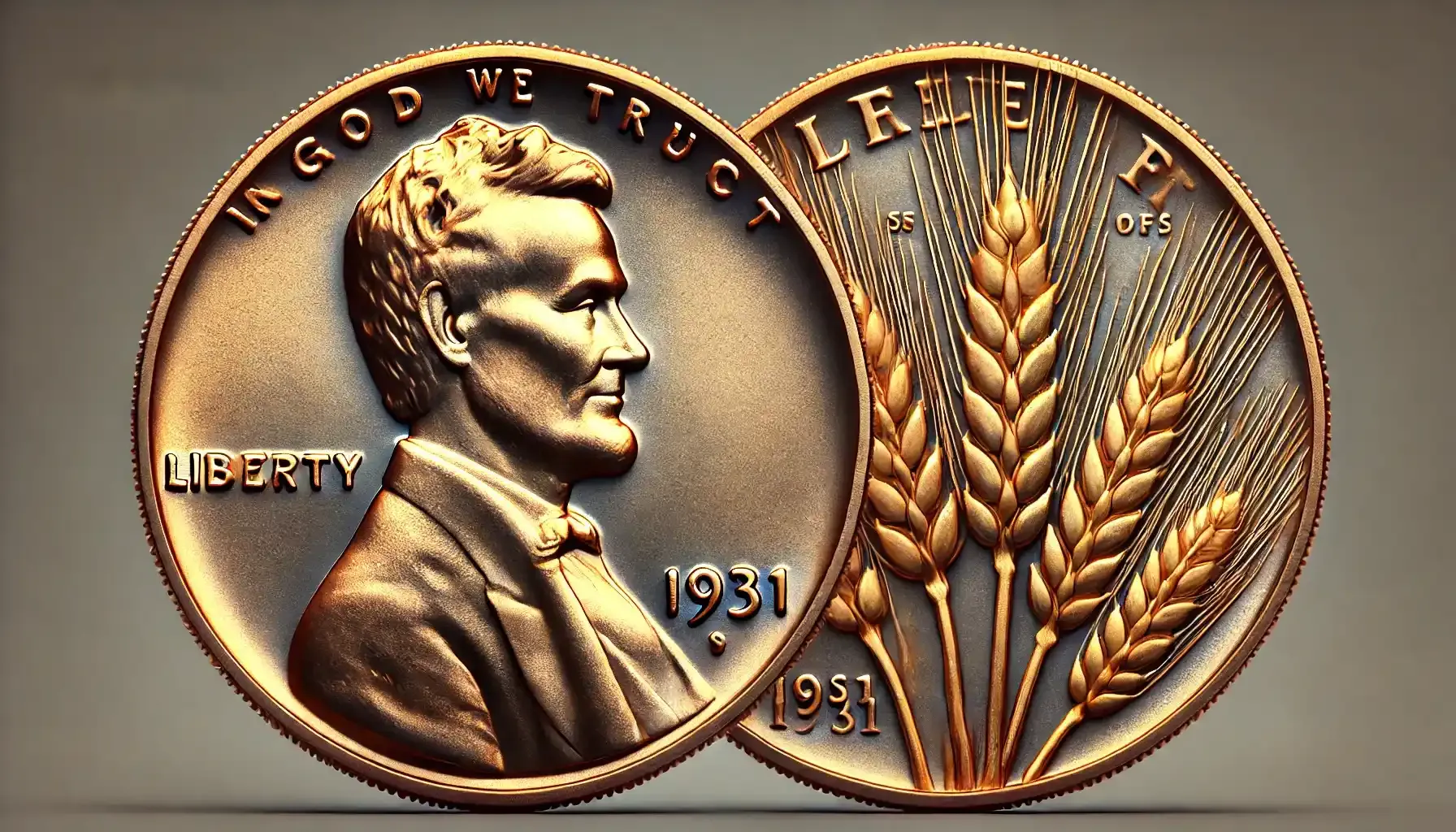
The first American penny was produced in 1787, though its official introduction took place only in 1793. The earlier versions were different from those that we possess today; these were made of copper and bore the image of Lady Liberty. Today, its long-lasting tradition is carried through the most valuable Lincoln pennies (value does not always mean price), which were initially released in 1909 to commemorate the 100th anniversary of Abraham Lincoln’s birth.
Types of Valuable Pennies to Look For
Even though most people might believe that the Lincoln pennies themselves represent a group of one-cent coins, this unit of currency might come into several types according to the minting period.
Period 1: Wheat Cents (1909–1958)
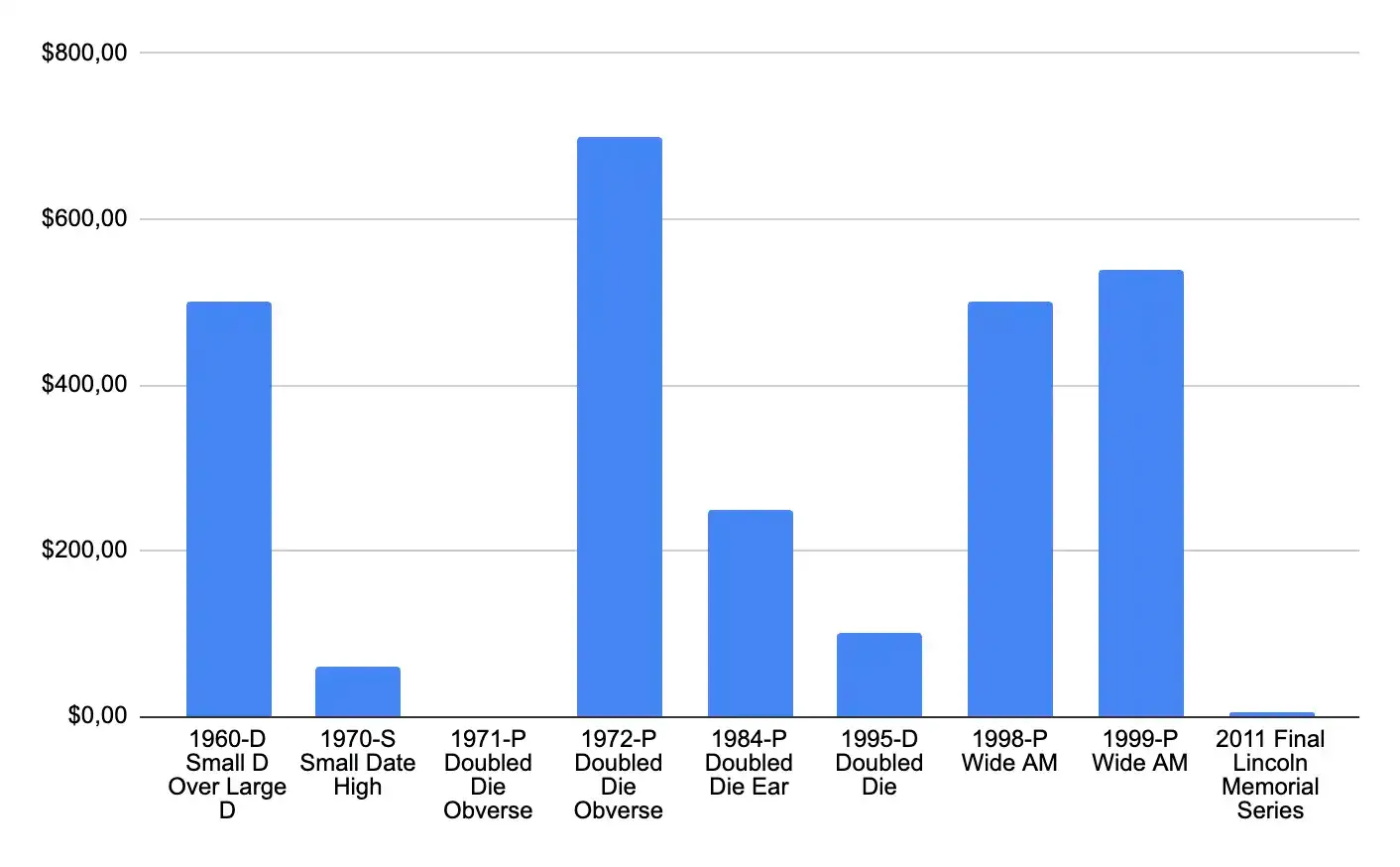
The first group of Lincoln pennies is comprised of wheat cents that got their name because of the distinctive wheat stalks presented on the reverse side. Some rare instances include the 1909 VDB pennies (the initials VDB refer to Victor David Brenner) and the 1931-S issues as well.
Steel Pennies (1943)
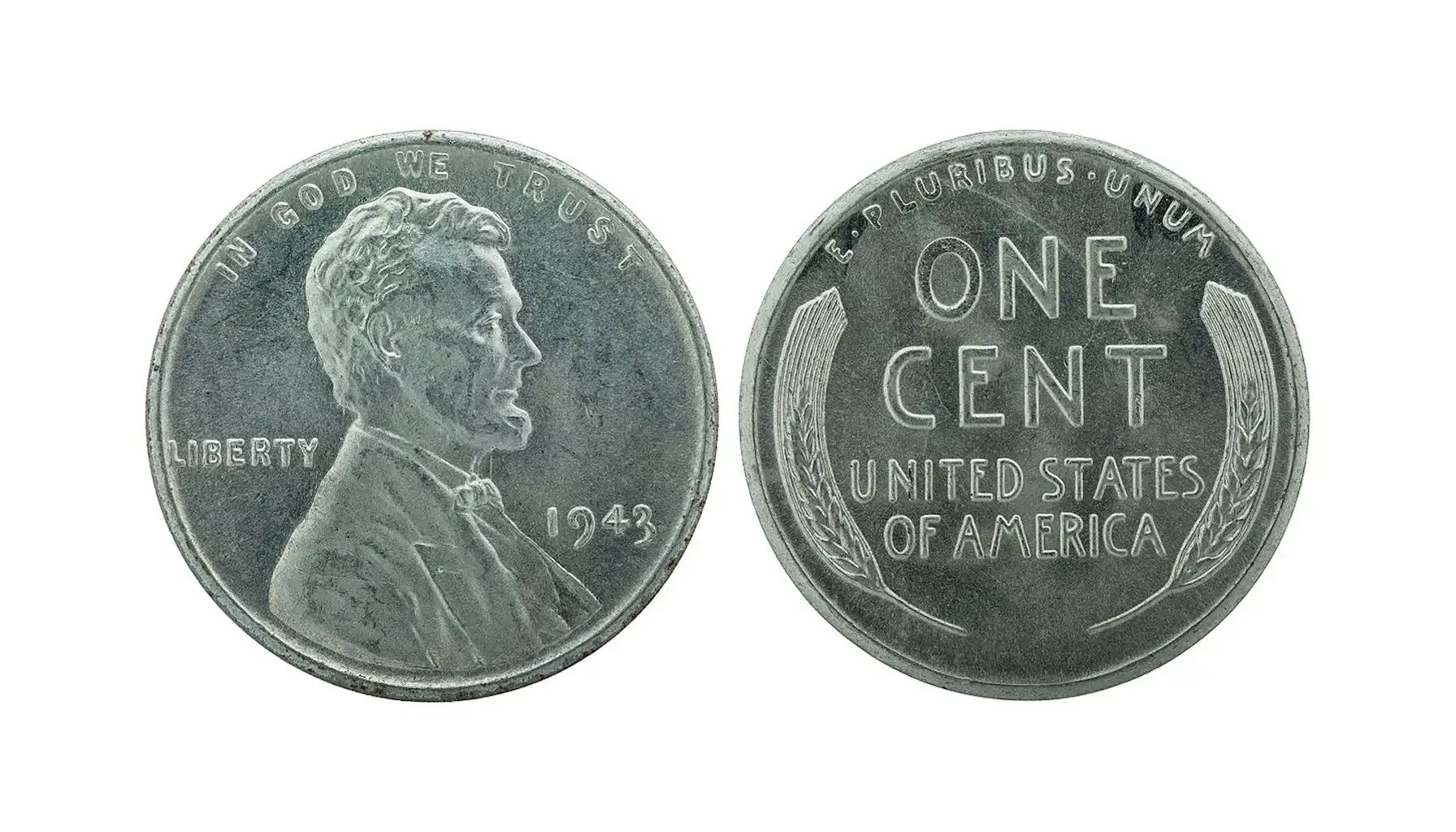
The period of World War II was usually characterized by numerous shifts in daily practices, and the minting traditions were also yet to change. Due to a copper shortage during, pennies were supposed to be produced from zinc-coated steel. By the way, this type is frequently observed in various collectors’ lists, such as “Top 100 Pennies Worth Money” and the like.
Period 2: Lincoln Memorial Pennies (1959–...)

In 1959, the US Mint brought to life a new design to commemorate another milestone, i.e., the 150th anniversary of Lincoln’s birth. Instead of almost trite wheat stalks, this iteration features the Lincoln Memorial with a statue hidden behind the columns. While it might be a widespread numismatic creation, some options might be of high quality (i.e., mint state) or bear errors instead.
Rare Lincoln Pennies by Period
Period 1: 1919 1C
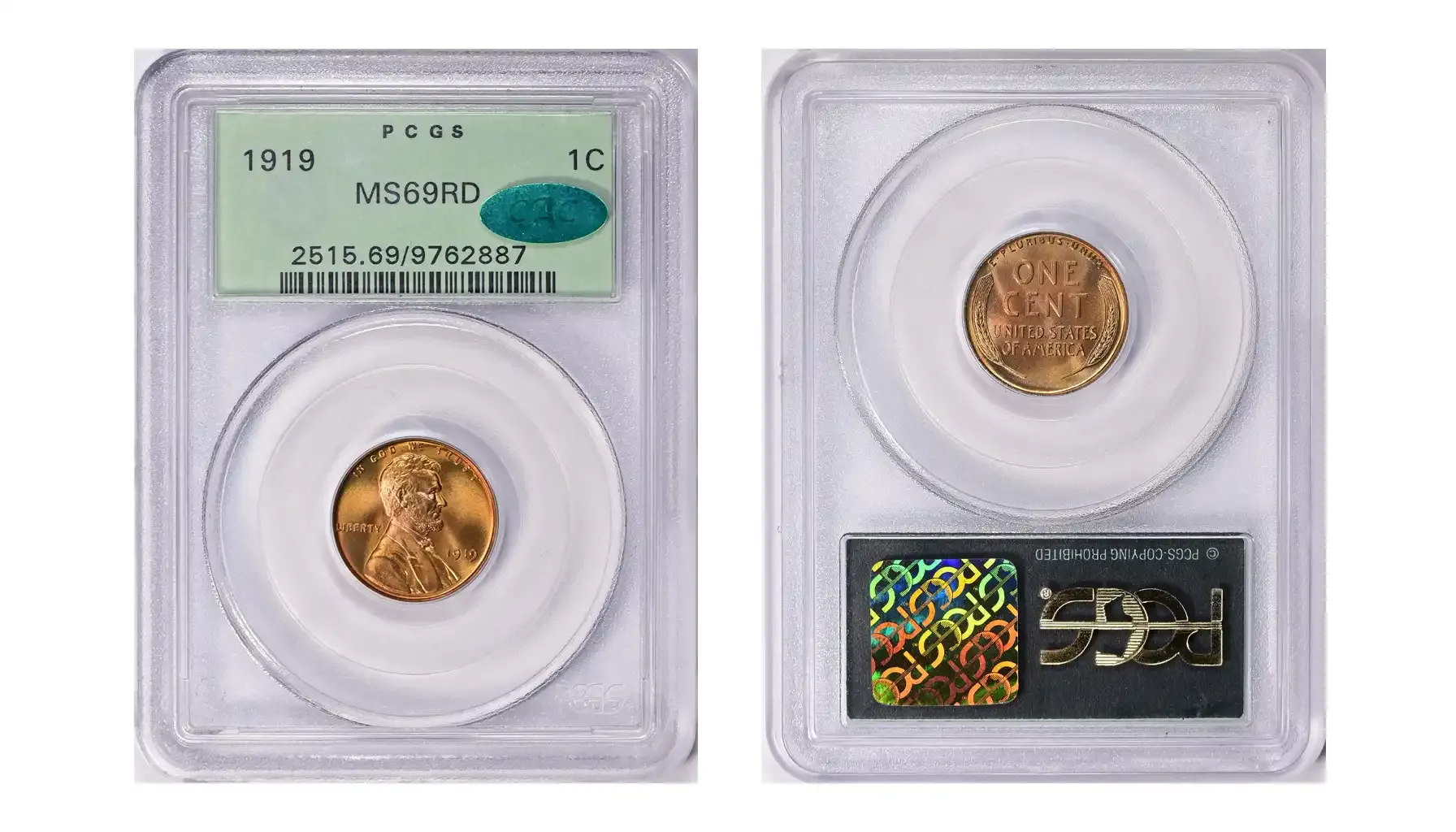
Auction Record: $375,000
Produced by: Philadelphia Mint
Mintage: 392,021,000
Grade: PCGS MS-69 RD
Though 1919 Lincoln Cents are common in circulated condition, this issue demonstrates immaculate preservation and stunning red luster with a near-perfect grade, making it one of the finest known from the era.
1943-S 1C
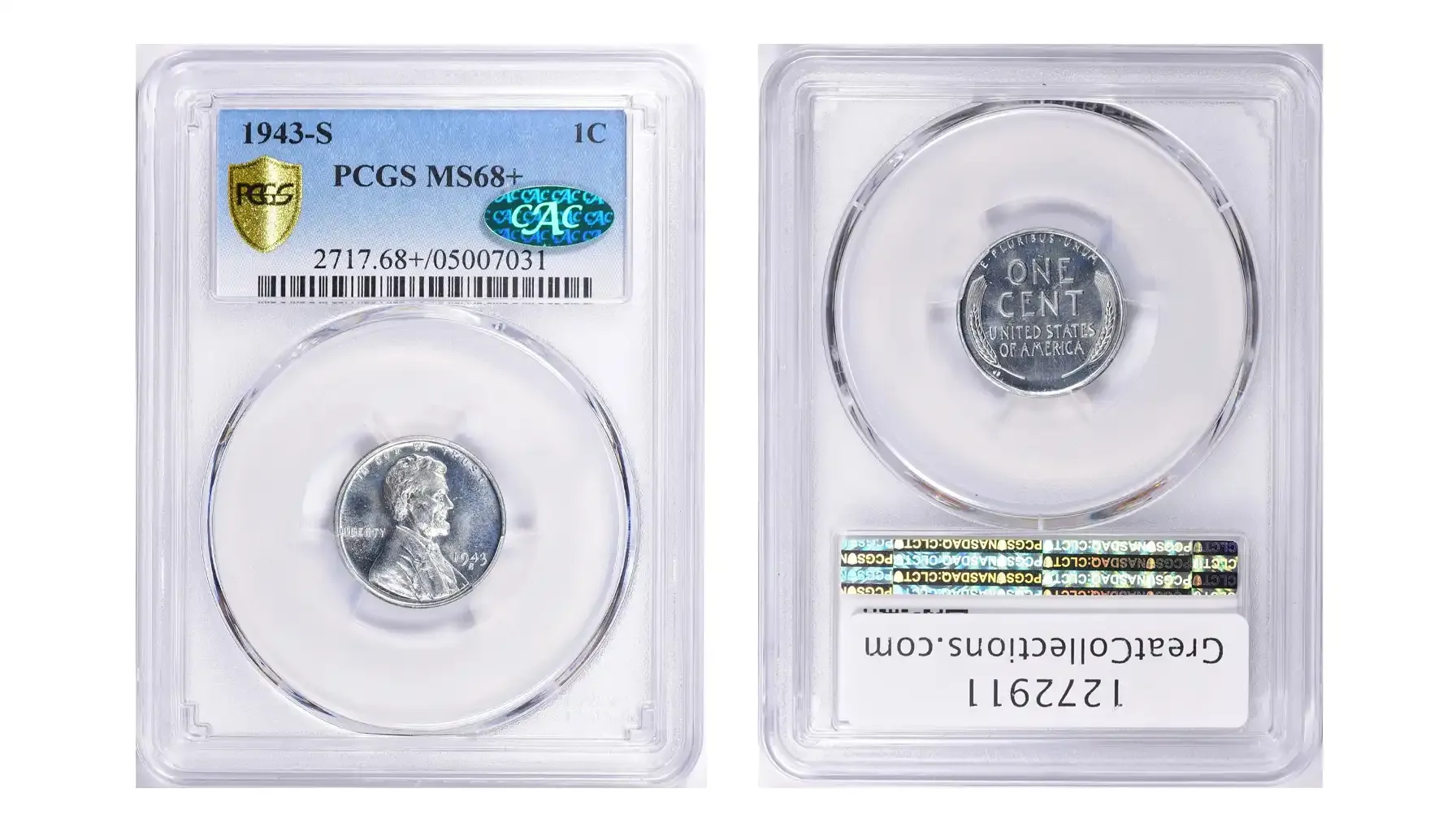
Auction Record: $41,000
Produced by: San Francisco Mint
Mintage: 191,550,000
Grade: PCGS MS-68+
The 1943-S Lincoln Cent is not inherently rare, though exceptionally high-grade examples like this one are. Its sharp strike and brilliant surfaces make it exclusive even among World War II-era issues.
Period 2: 1964 1C SMS
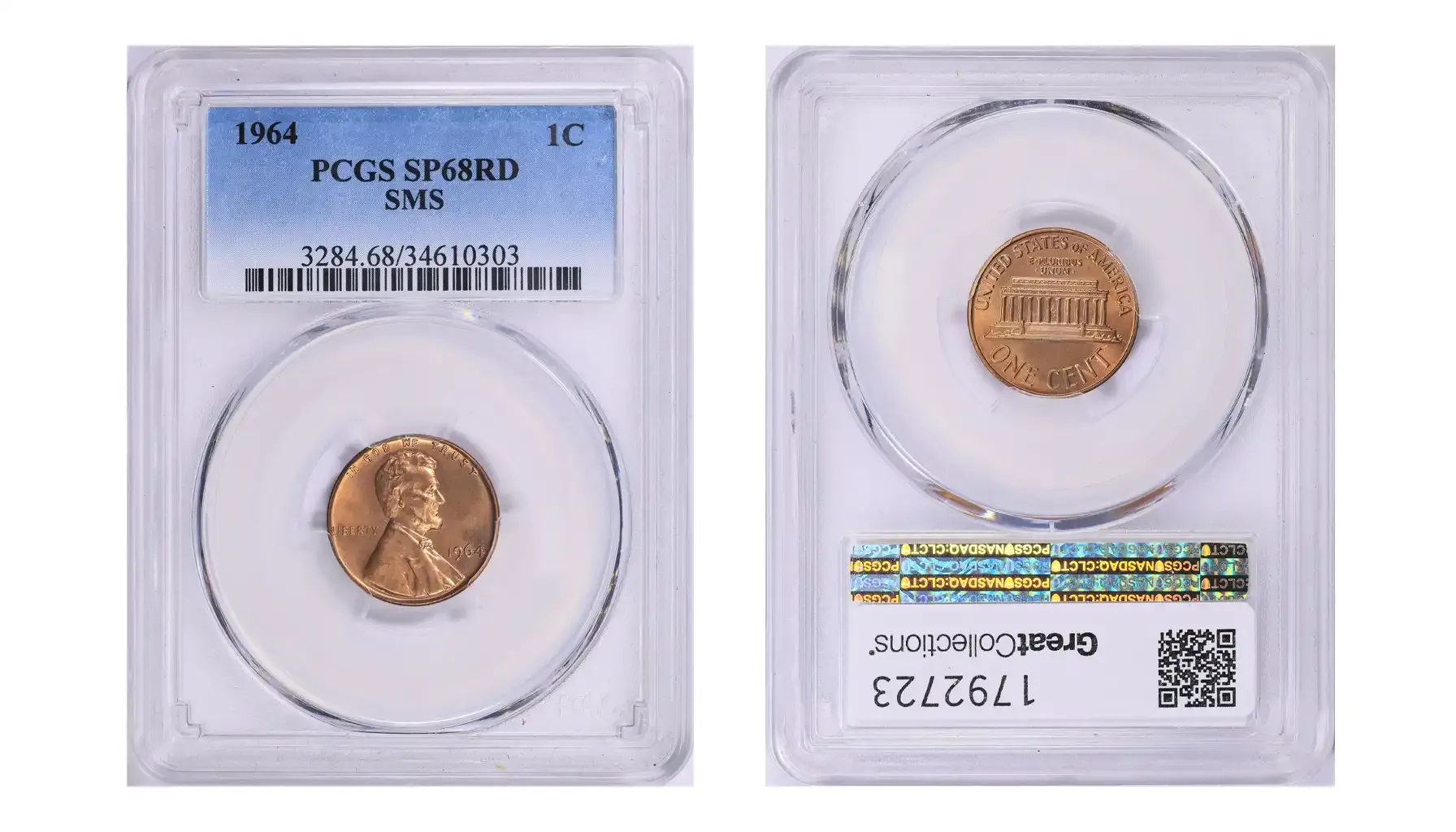
Auction Record: $36,000
Produced by: Philadelphia Mint
Mintage: Unknown
Grade: PCGS SP-68 RD
This instance is part of the mysterious 1964 Special Mint Set (SMS), believed to have been struck under experimental conditions. They were never officially released for circulation, which is why obtaining one is like a miracle.
Lincoln Penny Errors to Note
What are the best coins to collect for investment? Indeed, these are error pennies and their varieties. As for the coins with flaws, these are usually considered the most sought-after instances with double dies, off-center strikes, clipped planchets, die cracks, cuds, repunched mint marks, broad strokes, and even more.
1958 1C Doubled Die Obverse
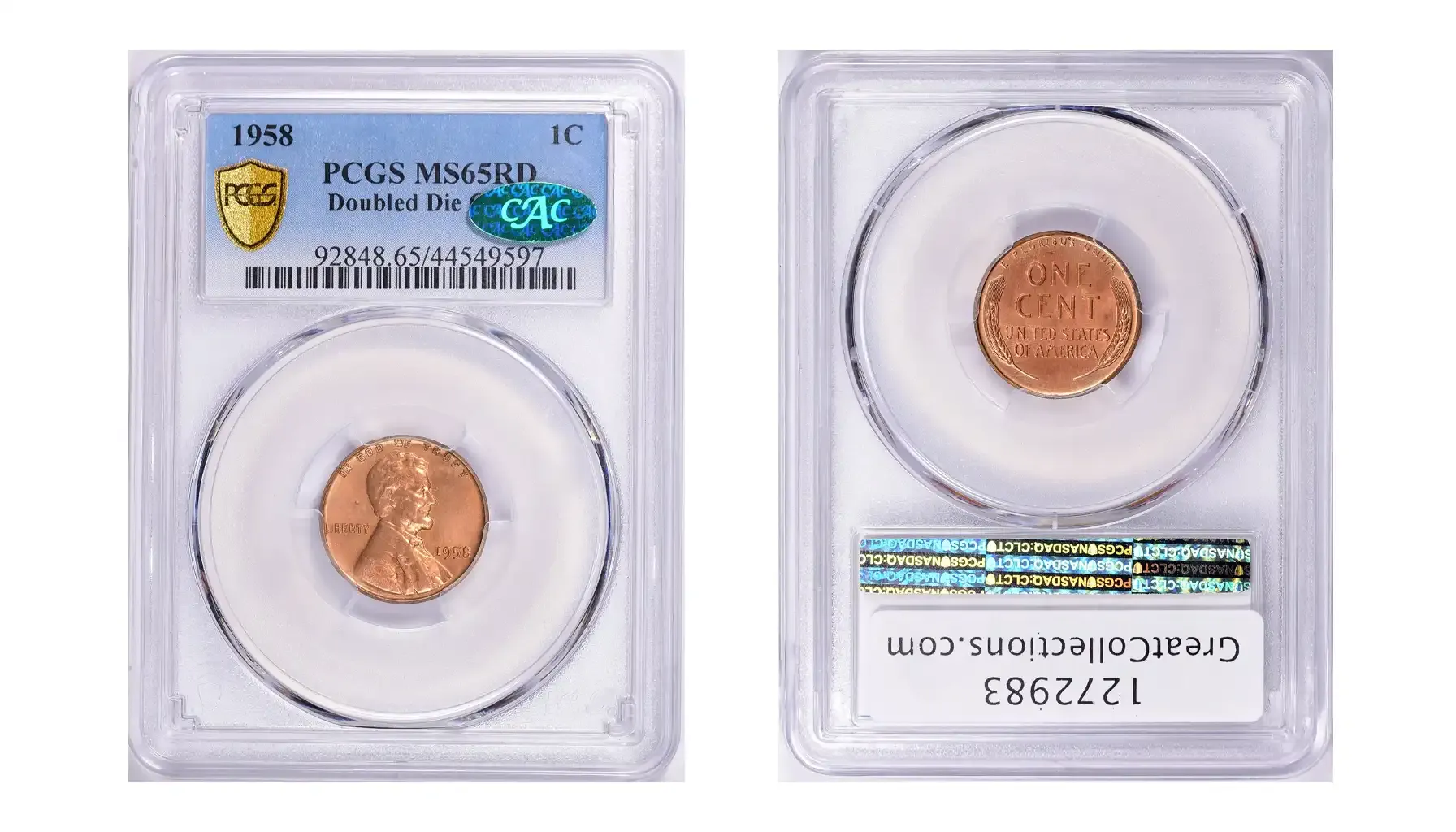
Auction Record: $1,010,000
Produced by: Philadelphia Mint
Grade: PCGS MS-65 RD
One of the rarest and most visually dramatic doubled die Lincoln cents. It is a true trophy piece that may boast a seven-figure auction record.
1969-S 1C Doubled Die Obverse

Auction Record: $535,000
Produced by: San Francisco Mint
Grade: PCGS MS-66 RD
A renowned piece that bears sharp and clear doubling on "LIBERTY" and "IN GOD WE TRUST" inscriptions. Highly coveted by collectors.
Lincoln Penny Value Chart 1959 to 2011 (Errors Only)
Which pennies are valuable? As with all coins, the condition, rarity, and market demand are the defining aspects of their value and pricing potential. The most valuable post-1959 coins are error coins, as they are usually hard to find and difficult to maintain. Below is a value chart that reflects coins that may be of particular interest these days.
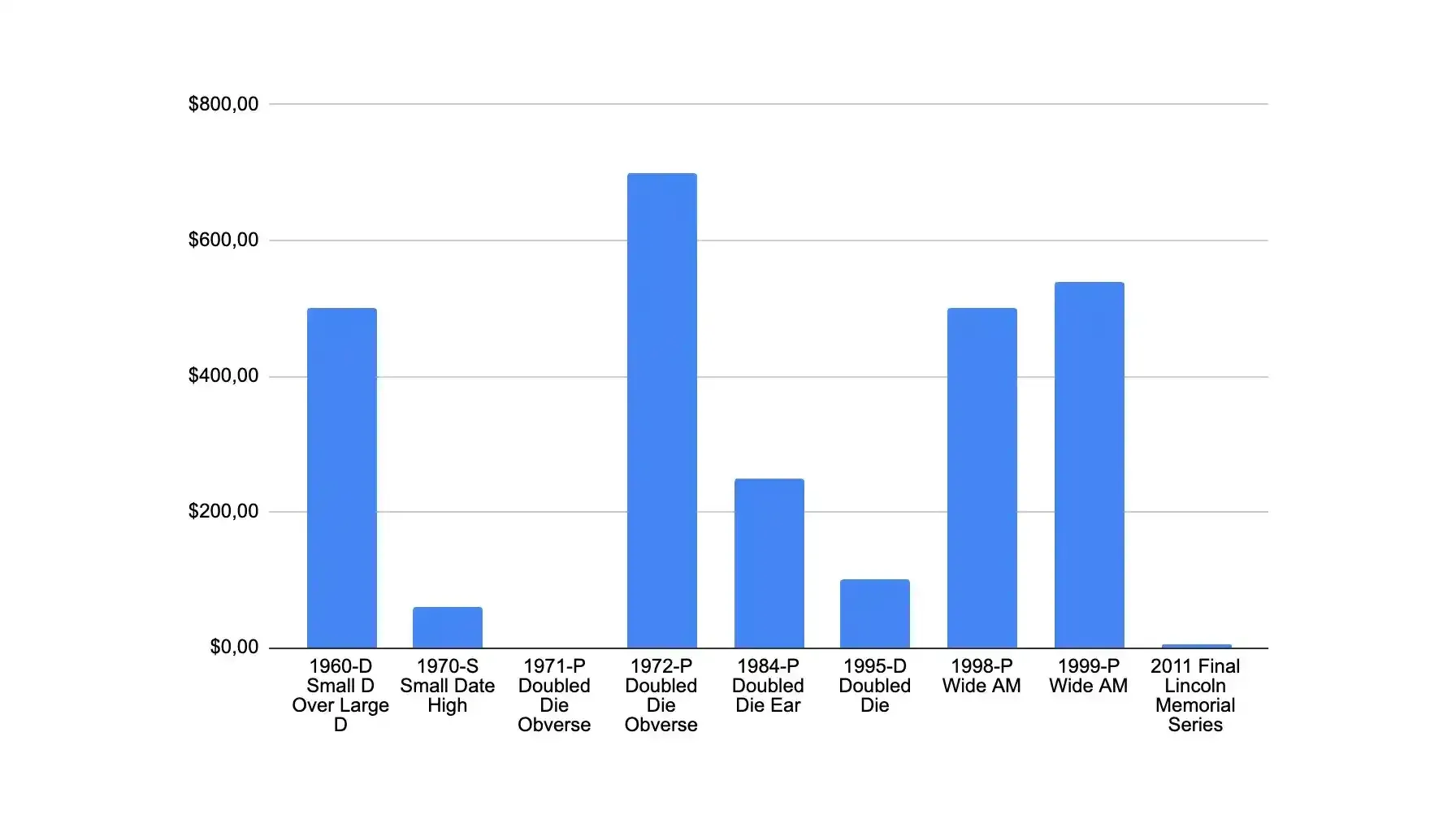
It is interesting! The exceptional instances might cost thousands of dollars. These include 1969-S Double Die Obverse with a price of $75,000, or 1983 Copper Penny with a price of $50,000.
Lincoln Pennies Worth Money List by Year
When it comes to hunting 1-cent coins, one may be flabbergasted by a wide range of instances present on the market. Nevertheless, some options might not bear any significance but stay on the outskirts of the numismatic sphere.
Type | Value | Description |
1909-S VDB | Exceeds $1,000 in high grades | The first year of the Lincoln penny design, with only 484,000 instances minted in San Francisco |
1914-D | Valued at over $200 | One of the rarest early Lincoln pennies ever struck |
1931-S | Values start around $100 for lower grades | A key low-mintage coin |
1943 Copper Penny | Sold for over $100,000 | Although it was the series made of steel only, a few copper planchets were accidentally used, creating one of the rarest Lincoln pennies. |
1955 Double Die | Often worth several thousand dollars | The classic error that consists in the dramatic doubling of “LIBERTY” and “IN GOD WE TRUST” |
1983 Copper Penny | May reach thousands of dollars | While most 1983 pennies were made from a zinc core, some copper pennies were struck mistakenly |
1992 Close AM | Can exceed $1,000 | The “AM” in “AMERICA” on the reverse spaced too closely together |
1999 Wide AM | Often valued at around $500 or more in high grades | Wider spacing between the “A” and “M” in “AMERICA” |
The most valuable pieces usually belong to the minority groups. Some coins like the 1792 half disme, though, might be lost in the flow of information and, hence, require more thorough investigations.
How to Identify a Culturally Significant Coin?
Identifying a culturally significant coin involves thorough preparations and a complete understanding of its historical, artistic, and social context. Instances that commemorate important events and feature renowned figures, as a rule, hold cultural value. To assess how valuable this or that coin may be, it might be reasonable to employ tools like Coin ID Scanner, but what is it?
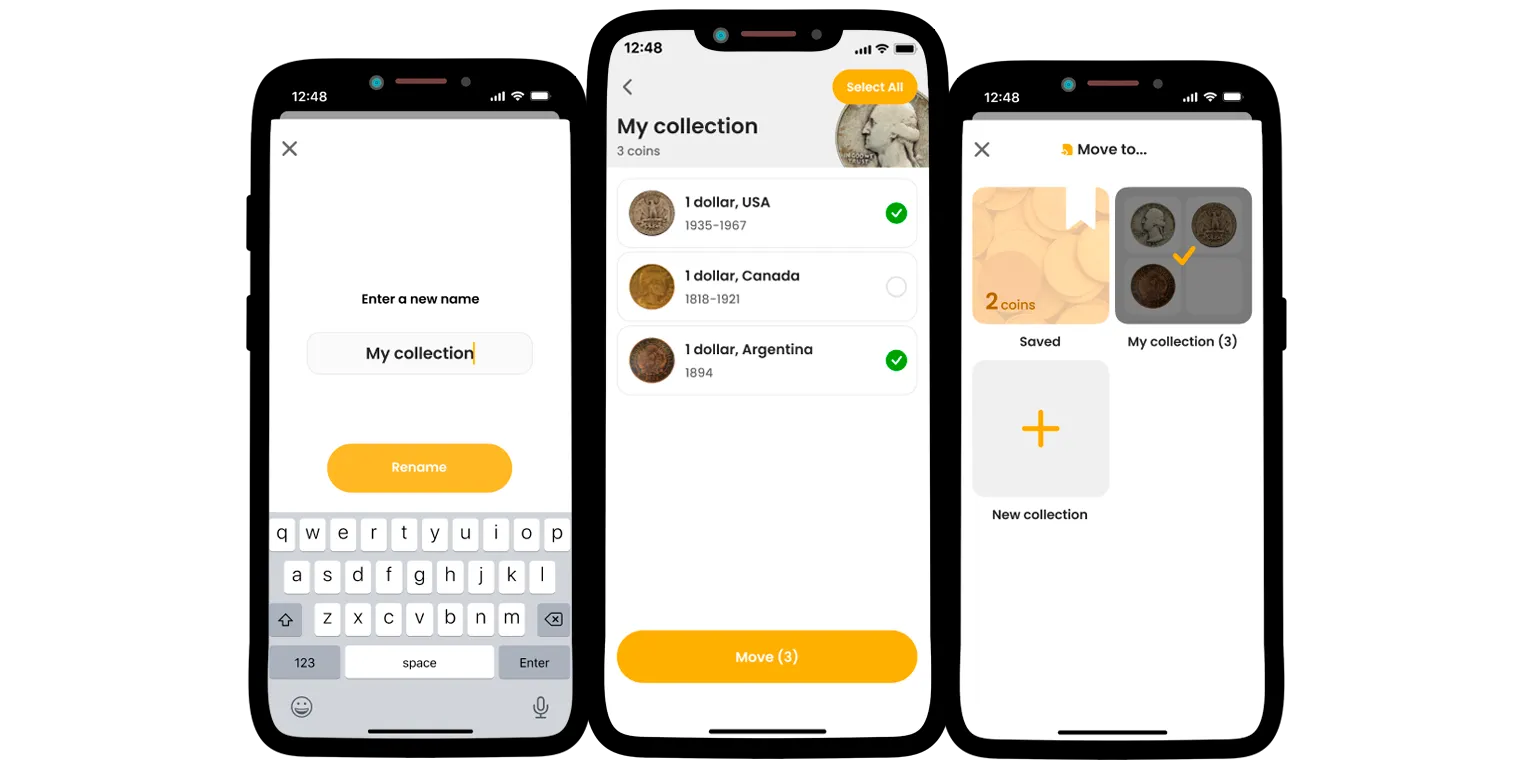
Coin ID Scanner is a fine representative of applications designed specifically for those who need extra numismatic assistance 24/7. These apps usually allow users to scan coins via an integrated camera, access detailed information on their history and value, manage collections, and communicate with other collectors to gain insights regarding particular instances. Should you wish to become a savvy collector, do not hesitate to rely on AI-powered technologies and trusted resources of all sorts.
Coins like Lincoln pennies always open doors to a fascinating yet terrifying history of the United States, which might be hidden in the course of time. Over the years, certain pennies have gained significant cultural value, but it is only the start of their journey.
Keep track of your collection and remember that coins might bring not only memories but finances, too.

